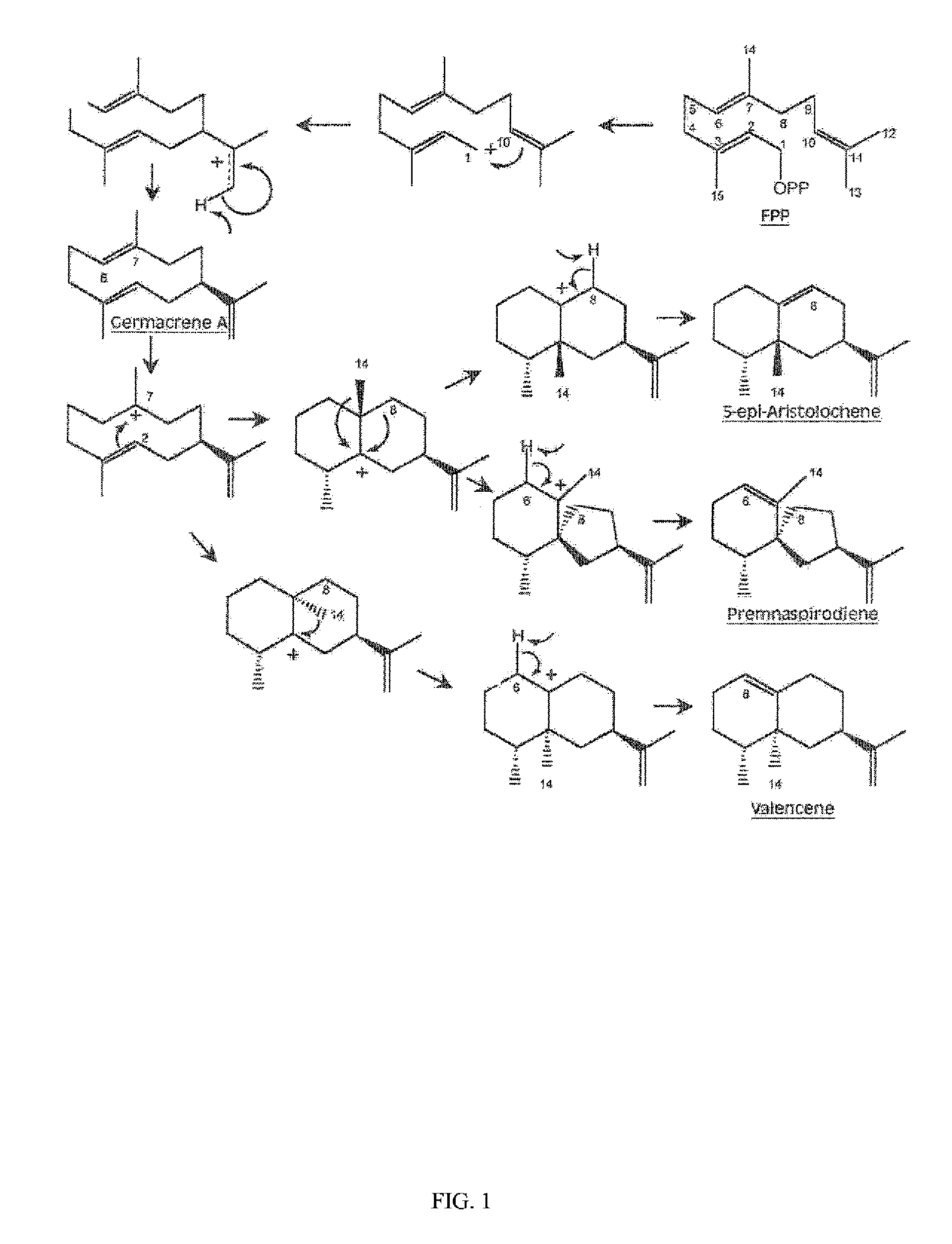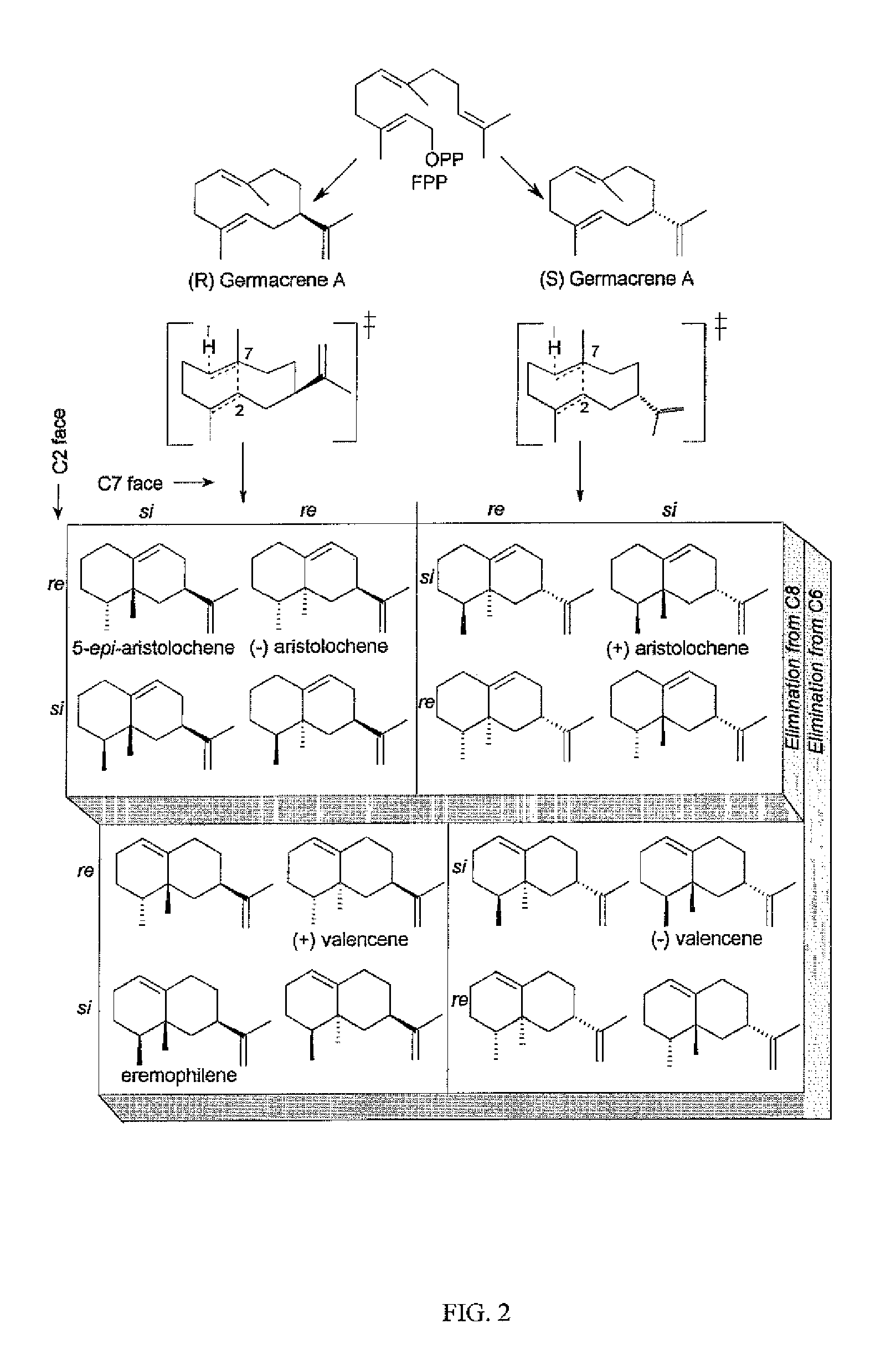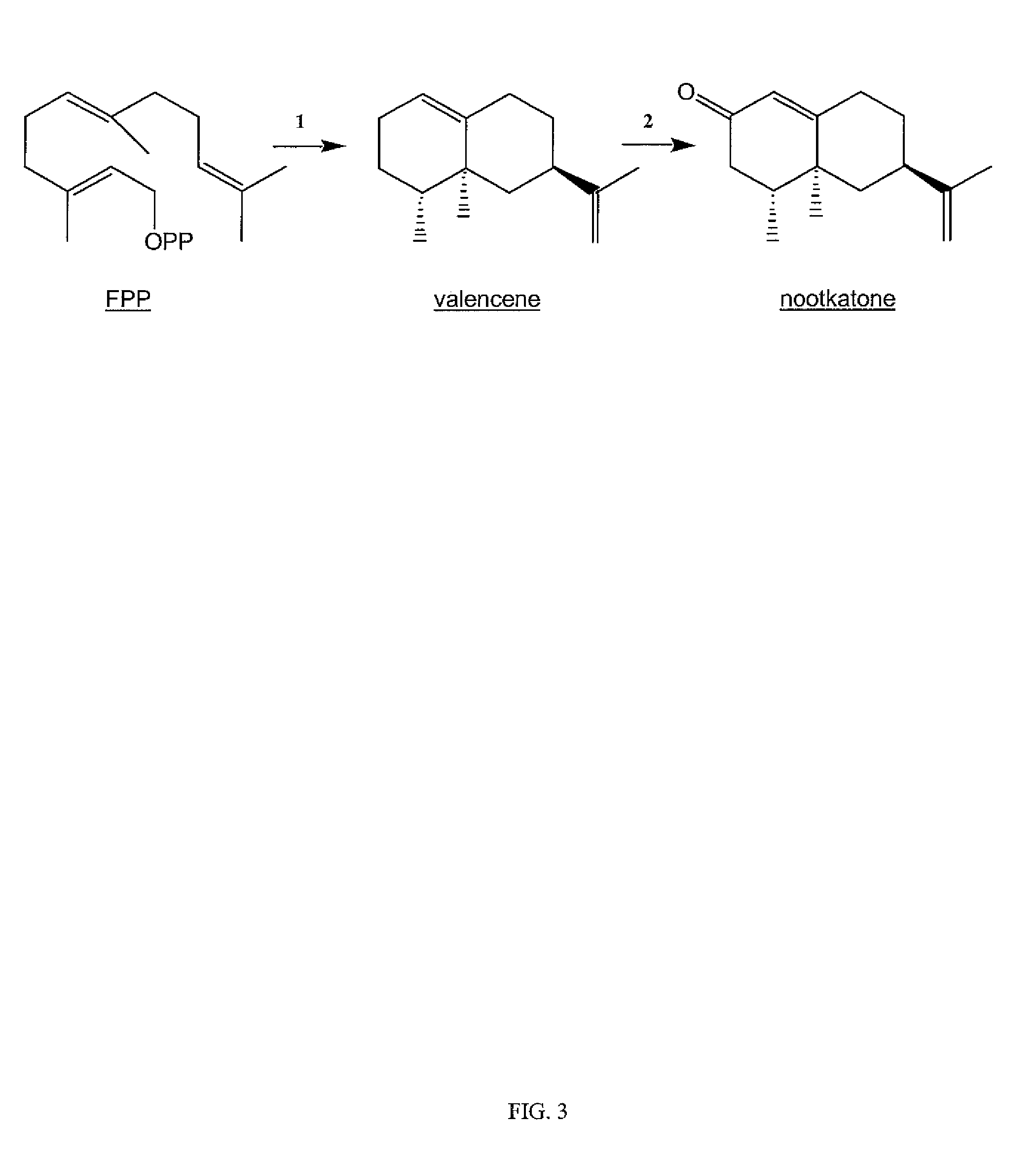Sesquiterpene synthase gene and protein
a technology of valencene and synthase gene, which is applied in the direction of transferases, lyases, carbon-oxygen lyases, etc., can solve the problems of difficult to achieve, difficult to achieve, and high cost of citrus pulp and rind valencene purification methods,
- Summary
- Abstract
- Description
- Claims
- Application Information
AI Technical Summary
Benefits of technology
Problems solved by technology
Method used
Image
Examples
example 1
Molecular Cloning of a Citrus Sesquiterpene Synthase cDNA
[0133]RNA was isolated from the juice vesicles of freshly harvested red grapefruit using TRIZOL reagent and following the manufacturer's protocol (Invitrogen Corp., Carlsbad, Calif.). Reverse transcription of the isolated RNA also followed manufacturer's protocol, and 10 μg of total RNA was reverse transcribed using Superscript II RNase H (Stratagene, La Jolla Calif.) and a reverse primer (18 nucleotides in length) complementary to the 3′ end including the stop codon of the AF411120 sequence reported in Genbank. A full-length cDNA was then amplified using Pfu turbo Taq polymerase (Stratagene, La Jolla Calif.), more of the initial reverse primer, a forward primer (18 nucleotides in length) complementary to the 5′ end initiating at the start codon, and an aliquot of the first strand cDNA using standard PCR conditions. An amplification fragment approximating the expected size of 1,800 bp was observed by agarose gel electrophoresi...
example 2
Expression of Citrus Valencene Synthase in E. coli
[0134]The Citrus valencene synthase (CVS) cDNA was inserted into an appropriate expression vector, pGEM to provide an amino-terminal hexa-histidyl tag for protein purification after expression of the putative valencene synthase cDNA in E. coli. The cDNA was re-amplified using PCR primers designed to amplify from the ATG start codon (5′-GGGGAATTCATCTGGTCTGGAGAAACATTTCGTCC-3′ (SEQ ID NO.: 2) to the TGA stop codon (5′-CCGCTCGAGGAAGTATAGAACTAGTCGTCAAAATGG-3′ (SEQ ID NO.:3)) and to provide restriction sites EcoRI and XhoI, (NEB, Beverly Mass.) respectively, using the pGEM-CVS plasmid as template under standard PCR conditions. The PCR product was digested with EcoRI and XhoI, purified using a QIAquick PCR purification kit (Qiagen, Valencia, Calif.), and ligated into a pET-28a(+) expression vector (Novagen, San Diego, Calif.) that had been digested with corresponding enzymes (NEB, Beverly Mass.), dephosphorylated with calf intestine alkali...
example 3
Terpene Synthase Activity Assays and Reaction Product Identification
[0137]Small scale reactions of 50 μL were used for screening purposes and rate determinations. Reactions typically contained 200 mM Tris-HCl, pH 7.5, 40 mM MgCl2, 0.5 μCi [1-3H]FPP, 25-30 μM FPP and 160 nM enzyme. For kinetic determinations, 10 μL aliquots of FPP (giving final concentrations of 0.7-23 μM) were rapidly mixed with 40 μL of enzyme solution at room temperature (23° C.) and allowed to incubate for 1 minute. The reactions were terminated by addition of 150 μL of a 100 mM KOH, 0.5 M EDTA stop solution. Reactions were extracted with 500 μL of hexane and an aliquot was taken for determination of radiolabeled hydrophobic product via liquid scintillation counting. Hexane extracted samples were not subject to silica chromatography prior to counting because background was minimal and synthase mutants could possibly produce reaction products containing alcohols, which would bind to silica. Kinetic constants were ...
PUM
| Property | Measurement | Unit |
|---|---|---|
| critical temperature | aaaaa | aaaaa |
| temperature | aaaaa | aaaaa |
| temperature | aaaaa | aaaaa |
Abstract
Description
Claims
Application Information
 Login to View More
Login to View More - R&D
- Intellectual Property
- Life Sciences
- Materials
- Tech Scout
- Unparalleled Data Quality
- Higher Quality Content
- 60% Fewer Hallucinations
Browse by: Latest US Patents, China's latest patents, Technical Efficacy Thesaurus, Application Domain, Technology Topic, Popular Technical Reports.
© 2025 PatSnap. All rights reserved.Legal|Privacy policy|Modern Slavery Act Transparency Statement|Sitemap|About US| Contact US: help@patsnap.com



